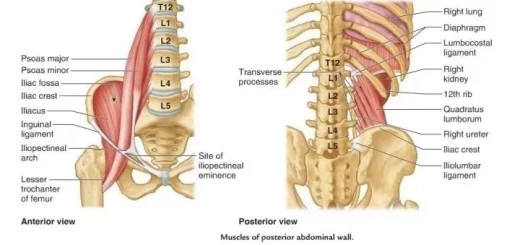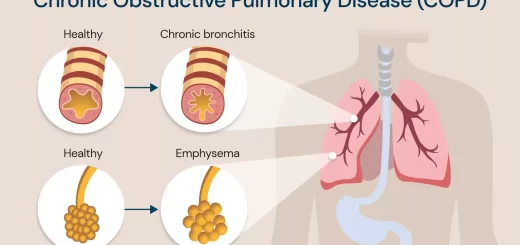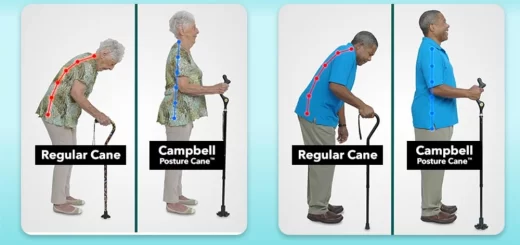Ascending tracts for somatic sensations and Deficits after lesions in the dorsal column pathway
Sensory (afferent) fibers from the receptors enter the CNS via the spinal dorsal nerve roots (for sensations from the body)) and the trigeminal root (for sensations from the face), with the nervous pathways conducting impulses to the higher levels of the CNS, referred to as the ascending tracts.
Ascending tracts for somatic sensations
The ascending (sensory tracts) involve several order neurons, the first order neuron for all sensations being the cell bodies in the dorsal root ganglia or the trigeminal ganglion which have their sensory afferent nerves.
1. Dorsal column lemniscal pathway (gracile and cuneate tracts)
They transmit the following sensations:
- Light touch.
- Two-point discrimination.
- Pressure.
- Vibration sense.
- Conscious proprioceptive sensations.
Pathway:
First-order neuron (Dorsal root ganglion):
Their fibers are thick, myelinated rapidly conducting Aα and Aβ fibers that enter the spinal cord via the dorsal nerve roots and pass to the dorsal white column on the same side giving off collaterals that pass into the dorsal horn of grey matter and then ascend in the white matter tracts without a relay.
Fibers that carry sensation from the skin and muscles of the lower limbs and inferior aspect of the trunk (below T6 dermatome) ascend in the most medial part of the dorsal column forming the gracile tract (fasciculus gracilis) which is found in all spinal levels, whereas fibers from the upper part of the body (above T6) ascend in the lateral part of the dorsal column forming the cuneate tract (fasciculus cuneatus).
The fasciculus cuneatus is found only at upper thoracic and cervical spinal cord levels and conveys sensation from the skin and muscles of the upper trunk, upper limb, neck, and posterior scalp. Fibers in the gracile and cuneate tracts ascend ipsilaterally till relaying in the gracile and cuneate nuclei of the medulla.
Second order neuron (gracile and cuneate nuclei)
Axons of the gracile and cuneate nuclei cross to the opposite side as the internal arcuate fibers, and then ascend as the medial lemniscus to relay in the ventral posterolateral nucleus of the thalamus.
Third order neuron (ventral posterolateral nucleus of the thalamus)
Axons of these cells ascend as the sensory radiation and terminate in the sensory area of the cerebral cortex in the postcentral gyrus of the parietal lobe.
Deficits after lesions in the dorsal column pathway
Patients with such lesions have a loss of proprioceptive sensation and thus are unable to identify the position of their limbs in space when their eyes are closed, a condition known as sensory ataxia, In addition, they may complain of paresthesia (abnormal sensation in the form of tingling or numbness) or loss of two-point discrimination, vibration and pressure sensations.
2. Ventrolateral (Anterolateral) system
It transmits the following sensations:
- Pain.
- temperature.
- Itch.
The second-order neuron of the anterolateral system forms the following pathways:
- The spinothalamic tract (neospinothalamic).
- The spinoreticular tract (paleospinothalamic).
- The spinomesencephalic tract.
The spinothalamic and spinoreticular tracts
Pathway:
First-order neurons (Dorsal root ganglion cells)
They give rise to 2 types of fibers. The fast pricking pain is transmitted by A6 fibers whereas the burning or aching slow pain is transmitted by slowly conducting C fibers. These fibers enter the spinal cord along the dorsal nerve roots to relay in the dorsal horn cells.
Second order neurons
The second-order neuron is the dorsal horn cells from which fibers cross to the opposite side close to the central canal at all levels of the spinal cord and ascend to the brainstem. Fibers carrying stow pain and temperature sensation pass to the reticular formation and then to the intra-laminar thalamic nuclei indirectly (spinoreticular tract), whereas fibers carrying fast pain pass to the ventral posterolateral nucleus of the thalamus directly (spinothalamic tract).
Third-order neurons
Neurons in the intra-laminar thalamic nuclei are associated with arousal they project to insular cortex which keeps memory of the stimulus that resulted in pain: the anterior cingulate gyrus and other parts of the limbic system which process the emotional content of pain. The fibers from the ventral posterolateral nucleus of the thalamus project to the somatic sensory area in the post central gyrus.
The spinomesencephalic pathway: this pathway activates periaqueductal grey which suppress pain.
3. Spinocerebellar tracts
They transmit unconscious proprioceptive sensations. They include:
- Dorsal spinocerebellar tract.
- Cuneocerebellar tract.
- Ventral spinocerebellar tract.
Dorsal spinocerebellar tract
Pathway:
First order neuron (Dorsal root ganglion)
The thick myelinated AB fibers of the dorsal root ganglia enter the spinal cord along the dorsal nerve roots fibers. Fibers convey information from the muscle spindles and Golgi tendon organs in the skeletal muscles in the lower limbs, relay in Clarke’s nucleus at the base of the dorsal horn from T1 through 13 spinal segments and form the dorsal spinocerebellar tract.
Second order neuron
Clarke’s column neurons are the second-order neurons for the dorsal spino-cerebellar tract. Fibers ascend from these neurons on the same side of the spinal cord in the posterolateral column of white matter up to the medulla, and then pass through the inferior cerebellar peduncle to terminate in the cerebellar cortex.
The ventral spinocerebellar tract
These are thick myelinated AB fibers that enter the spinal cord along the dorsal nerve roots fibers. The second-order neurons of this pathway arise from the grey matter of the spinal cord and receive a diverse input from proprioceptors and the descending tracts.
The fibers travel anterior to the dorsal spinocerebellar tract with some fibers (from upper limb) ascending on the fame side while others (from lower limb) crossing to the opposite side. Fibers ascend to the midbrain, where the crossed fibers re-cross and with the uncrossed fibers through the superior peduncle to terminate in the cerebellar cortex, It conveys information to the cerebellum about the activity occurring in the motor tracts.
Cuneocerebellar tract
This tract is analogous to the dorsal spinocerebellar tract but conveys information from the muscles spindles and Golgi tendon organs in the skeletal muscles in the upper limbs and relays in the accessory cuneate nucleus in the medulla before reaching the cerebellar cortex.
Other ascending tracts
Trigeminal sensory pathway
The first-order neuron is the trigeminal ganglion which carries touch, proprioception, and pain and temperature sensation from the face, These fibers relay in the 3 trigeminal sensory nuclei (the second-order neurons) in the brainstem. Each receives a different type of sensory information.
The spinal trigeminal nucleus receives fast pain and temperature information from the face. The fibers of these cells relay in the spinal trigeminal nucleus then cross and ascend in the trigeminal lemniscus to the thalamus (third-order neuron) and then reach the cortex. They terminate in the sensory area of the cerebral cortex in the postcentral gyrus of the parietal lobe.
Spino-olivary tract
The spino-olivary tract ascends from the spinal cord to the inferior olivary nucleus in the medulla, Its function is a motor learning and modifying motor actions.
Spino-tectal tract
It runs from the cervical cord to the superior colliculus of the midbrain. It integrates visual reflexes with tactile stimuli from the head and neck.
You can subscribe to Science Online on YouTube from this link: Science Online
You can download Science Online application on Google Play from this link: Science Online Apps on Google Play
Physiology of pain sensation, Types of pain receptors, Effects of somatic pain & Visceral pain
Physiology of sensory receptors, Coding of sensory information & Somatic sensation
Function of sensory nervous system, Histological structure of ganglia and receptors
Cranial nerves types, Facial, Vestibulocochlear, Glossopharyngeal, Vagus, Accessory & Hypoglossal
Facial muscles function, anatomy, arteries, veins, names & expressions
Skull function, anatomy, structure, views & Criteria of neonatal skull




